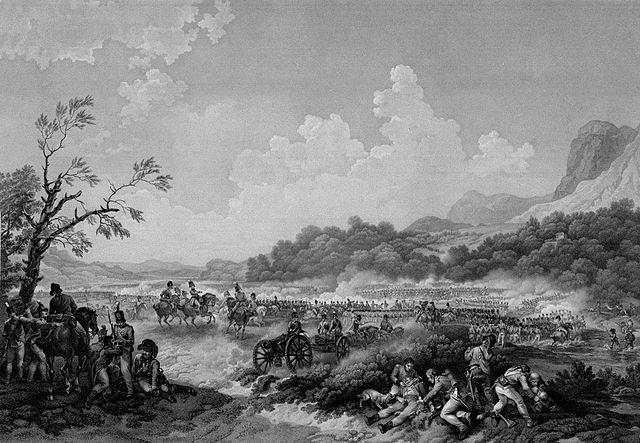Philip James de Loutherbourg
Philip James de Loutherbourg, whose name is sometimes given in the French form of Philippe-Jacques, the German form of Philipp Jakob, or with the English-language epithet of the Younger, was a French-born British painter who became known for his large naval works, his elaborate set designs for London theatres, and his invention of a mechanical theatre called the "Eidophusikon". He also had an interest in faith-healing and the occult, and was a companion of the confidence-trickster Alessandro Cagliostro.
Philip James de Loutherbourg, self-portrait
The Battle of Camperdown (1799)
Landscape with cows, Wilanów Palace, Warsaw
Battle of Maida
Marine art or maritime art is a form of figurative art that portrays or draws its main inspiration from the sea. Maritime painting is a genre that depicts ships and the sea—a genre particularly strong from the 17th to 19th centuries. In practice the term often covers art showing shipping on rivers and estuaries, beach scenes and all art showing boats, without any rigid distinction - for practical reasons subjects that can be drawn or painted from dry land in fact feature strongly in the genre. Strictly speaking "maritime art" should always include some element of human seafaring, whereas "marine art" would also include pure seascapes with no human element, though this distinction may not be observed in practice.
Rembrandt's stolen masterpiece, The Storm on the Sea of Galilee (1633).
20th-century ukiyo-e print of Boats in Snow
Willem van de Velde the Elder's The Capture of the Royal Prince during the Four Days' Battle, 1666.
The reed boat petroglyph at Gobustan.








